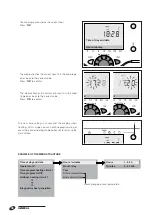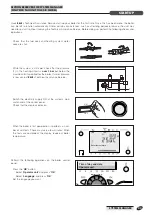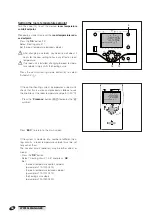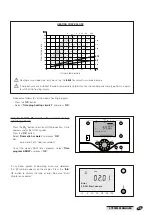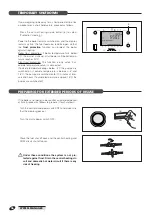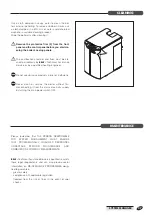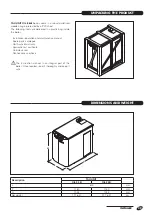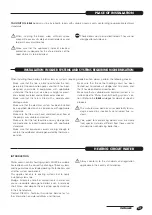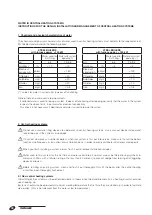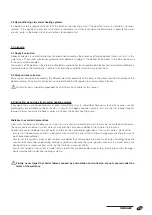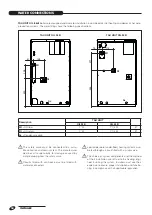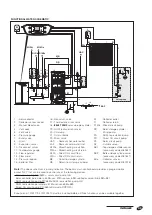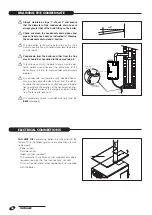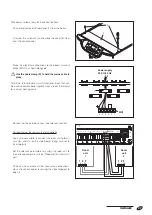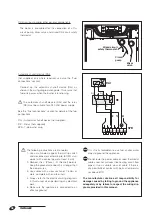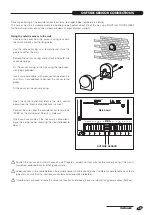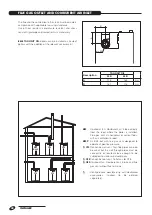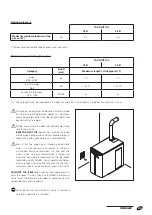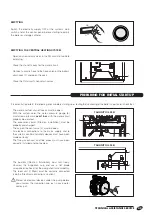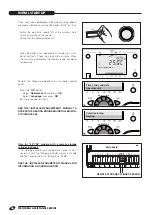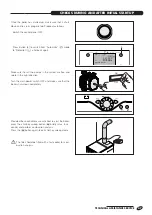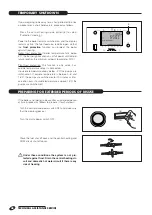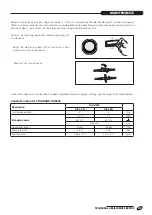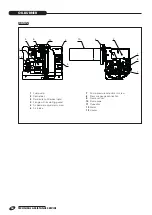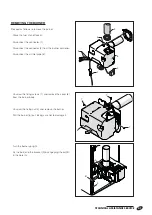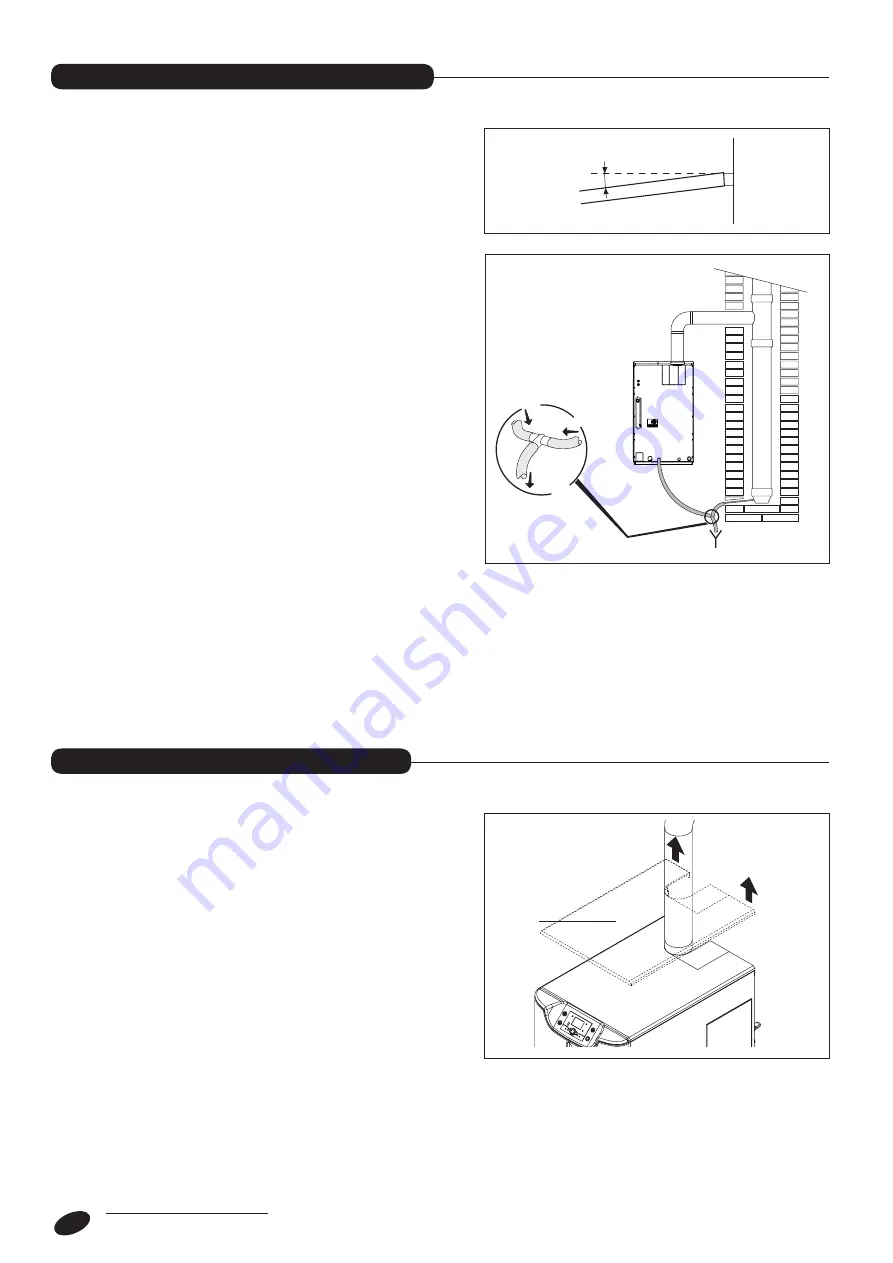
INSTALLER
36
b
Always maintain a slope “i” of over 3° and ensure
that the diameter of the condensate drain hose is
always greater that of the drain fitting on the boiler .
b
Check and clean the condensate drain siphon and
pipes at least once a year, as instructed in “Cleaning
the condensate drain siphon” section.
b
The connection to the waste water drain pit must be
made in compliance with national and local legislation
and standards.
b
Condensate from the boiler and that from the flue
stack should be channelled to the same drain pit .
b
The surface on which the boiler stands must be per-
fectly horizontal and flat over the entire area of the
boiler frame in order to avoid condensate drainage
problems.
b
Any condensate neutralisation units deemed neces-
sary may be connected downstream from the siphon.
Evaluate the neutralisation unit after one year of opera-
tion to estimate the duration of the neutralisation char-
ge. The total duration of the charge can be estimated
from the level after one year.
b
It is mandatory to use a condensate trap (see the
r
catalogue).
i
i
≥
3°
BOILER
Drain
Condensate from stack
Condensate
from boiler
To drain or
neutralisation
unit if installed
Flue
TAU UNIT OIL
condensing boilers are fully wired in the
factory. Only the following electrical connections remain
to be made:
- Power supply
- Outside sensor
- Room unit (not supplied)
- The automatic shut-off device (not supplied; only where
required; see also the “Fuel connections” section)
- CH circuit pump and/or other components not supplied
with the boiler.
1
Draining the condensate
DRAINING THE CONDENSATE
Electrical connections
ELECTRICAL CONNECTIONS

